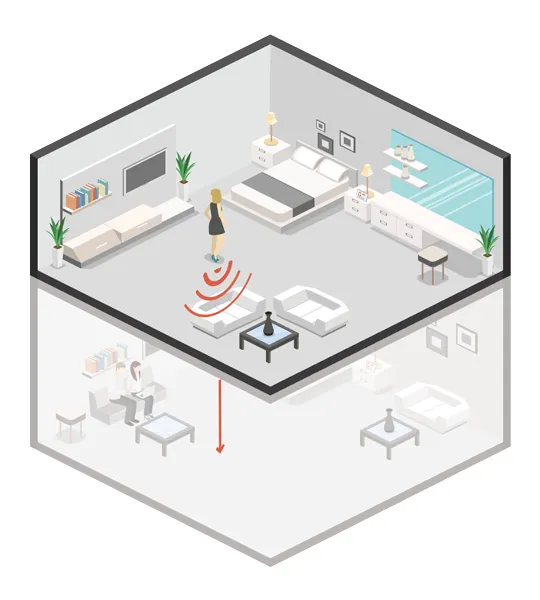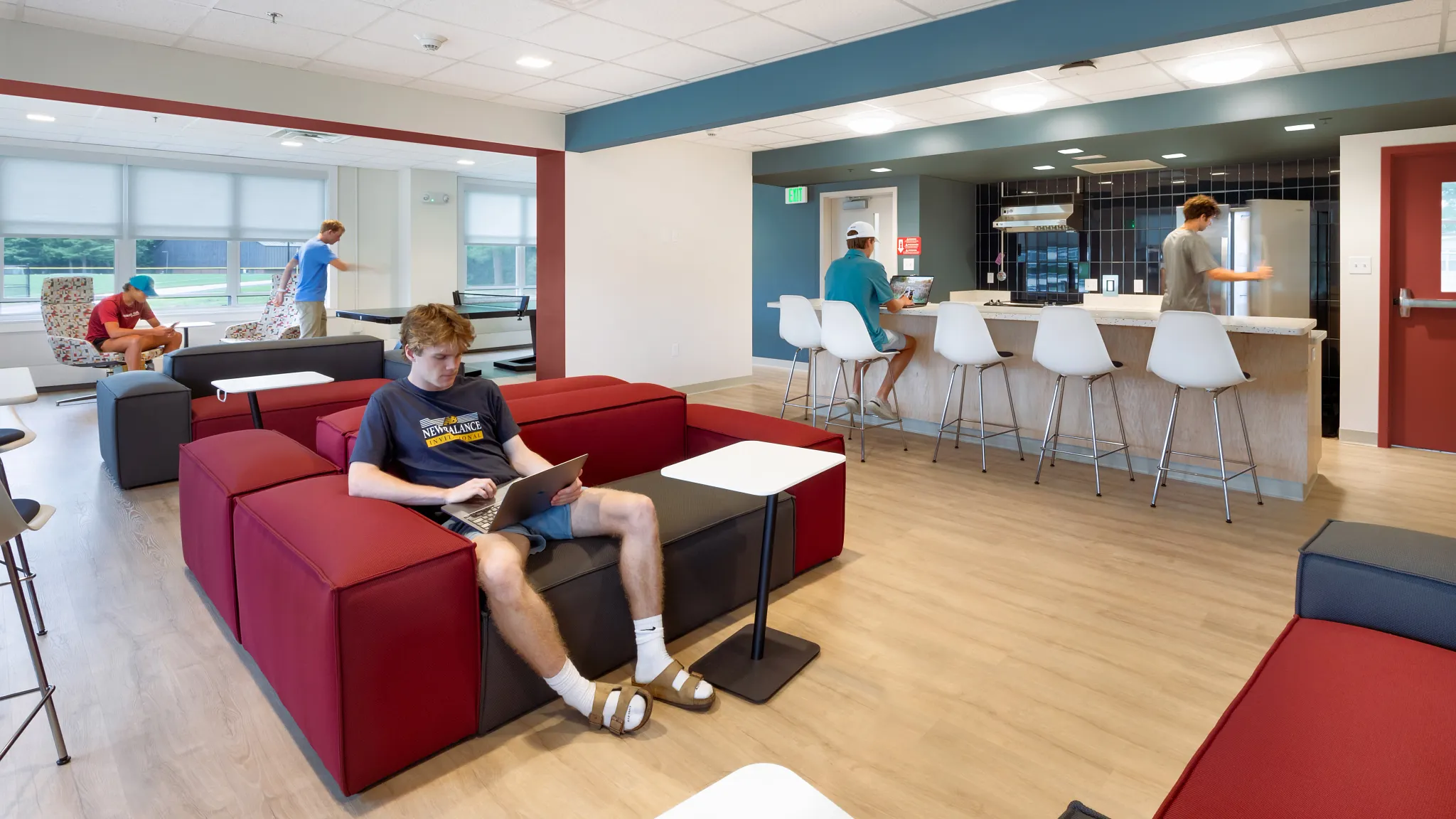Higher Education
The Roommate You Didn’t Expect: How Acoustics Shape Dorm Life
Article Written by Sara Hudson, Shaw Contract, Education + Government Director | Published by Learning by Design
The Roommate You Didn’t Expect: How Acoustics Shape Dorm Life
Walk into any student housing or dormitory today, and you’ll hear it before you see it — the muffled thud of footsteps overhead, the distant buzz of conversations through the walls, the sharp clatter of communal spaces with little to no sound absorption. Let’s face it, college students aren’t exactly known for keeping it down. From late-night video calls to impromptu hallway karaoke, noise is part of the culture.
While aesthetics and functionality often take center stage in student housing design, acoustics deserve equal attention for their impact on student comfort, focus and mental health. Designing for acoustical balance isn't just about comfort — it’s a health intervention. One research study found that noise can activate the body's stress response by raising levels of cortisol, adrenaline and noradrenaline, even if the person isn’t aware of feeling annoyed.
College life comes with its own stress, but how we manage sound in student spaces can go a long way in supporting mental clarity and comfort. Wellness design demands a holistic approach. Students need a harmonized environment that supports how they live, learn and recharge. It is not just about quieting a room; it is about balancing three essential testing elements: Airborne Sound (STC), Impact Sound (IIC) and In Room Sound (SAA).
The 3 Pillars of Acoustic Wellness
Every environment has its own soundscape, which are layers of sound that shape how we feel and function in a space. From the sharp thud of footsteps above to the murmur of voices through a wall or the echo of a conversation in a shared room, these auditory cues can either support or disrupt student wellness. Thoughtfully selected materials play a critical role in designing soundscapes that nurture focus, comfort and calm. At the heart of these soundscapes are Airborne Sound (STC), Impact Sound (IIC) and In Room Sound (SAA). Each captures a different dimension of how sound moves and mastering the balance between them is essential to designing for wellbeing.

Sound Transmission Class (STC), also known as Airborne Sound, is a measurement of the amount of in room sound energy a product finish prevents from transmitting from one room to another — things like conversations, music and TV sounds. Without strong STC, students live in a fishbowl of noise, robbed of privacy and deep sleep. The largest contributors to improving STC are the flooring and ceiling construction materials.

Impact Insulation Class (IIC), also known as Impact Sound, references how well a floor/ceiling assembly, including the finished floor, reduces the impact of sound such as the heavy footfalls, sliding furniture and unexpected thuds that punctuate shared living spaces. The International Building Code requires an IIC of 45–50 in a field test. Poor IIC can result in chronic sleep disturbances and growing resentment between neighbors. This rating can be upgraded with simple changes to the flooring to include soft surfaces and rugs or even acoustical underlayments beneath hard surface flooring types.
In a recent renovation project, Bates College repurposed a 1970s building, which was originally built to house 30 nuns as part of a healthcare facility to accommodate student housing. With acoustics as a priority, the space was upgraded with Branching Out COREtec 20mil for its sound-absorbing benefits, dramatically improving noise control and creating a quieter, more comfortable environment for student living. Who says you can’t teach an old building new tricks? By switching from standard LVT (IIC 33) to Branching Out Coretec 20 Mil acoustical LVT (IIC 52), the impact sound rating improved by approximately 58 percent, delivering significantly quieter, more comfortable spaces.

The Sound Absorption Average (SAA), also known as In Room Sound, measures the amount of sound energy absorbed by a product such as flooring, ceiling tiles, fabric or furniture. When designing a living environment, this test allows you to measure how two different spaces with the same amount of sound energy will differ from one another. How quickly the sound dissipates and how it reflects will change occupants’ perceptions of their space. Low SAA makes lounges and corridors feel chaotic and overstimulating, draining students’ focus and mental energy. College students, 25 years old and younger, can hear a wider range of high frequency sounds — up to 20,000 Hz — that many adults can't detect. Without proper acoustical design, subtle noises like electronic hums, HVAC whines and appliance buzzes can quietly contribute to stress, distraction and fatigue. SAA can be improved with acoustical treatments, softer finishes like curtains and furniture and soft flooring options.
Balancing the Soundscape
When these three metrics are balanced, the results are remarkable: better sleep, sharper cognition, lower stress and deeper satisfaction with the living experience. It is, of course, a balance. Sound isn’t just an environmental factor; it’s a wellness tool — and in your hands, it becomes transformative.

Branching Out Coretec 20 mil in Riverside Oak | Bates College 96 Campus Ave Project Photography
One study conducted by Best Colleges in 2023 found students ranked location (47 percent), quality of life (38 percent) and campus safety (33 percent) as the most important campus and student life factors when choosing their college — and acoustics silently influence them all.
Hear the Difference: Sound Advisor
Understanding acoustics on paper is one thing, but hearing the difference is another. That’s why we developed an interactive tool, Sound Advisor, allowing you to listen to how different subfloor constructions and flooring assemblies impact STC, IIC and SAA outcomes. In just a few minutes, you can hear how material choices create vastly different acoustical experiences, informing you to make smarter, wellness-focused decisions for your projects.
Designing for the Future of Student Wellness
We may not see noise, but its influence is hard to ignore. By designing for balanced acoustics, you are not just crafting more comfortable spaces, you are safeguarding students’ mental health, promoting academic success and creating environments where connection and rest can thrive. Acoustics are the difference between a student feeling isolated and overstimulated — and one feeling focused, restored and ready to succeed.
July 22, 2025